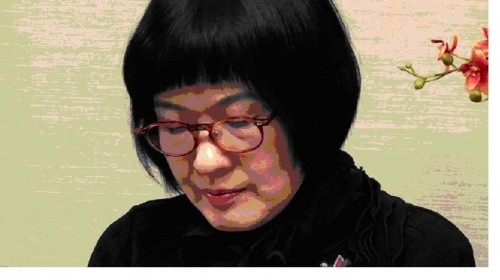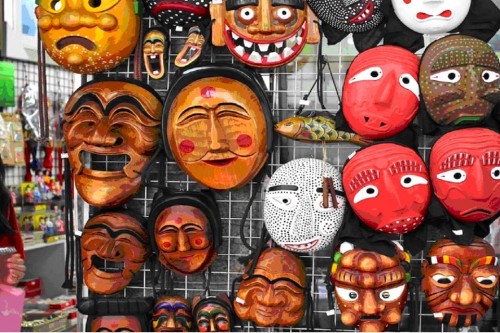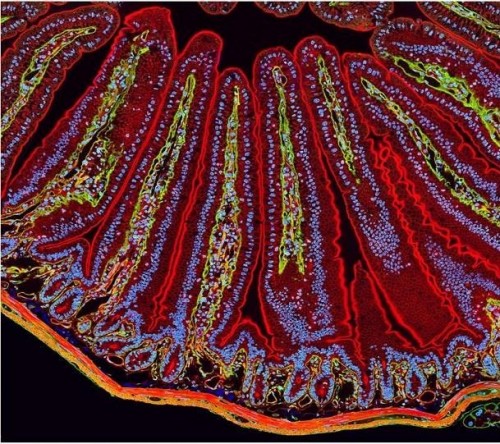Random
THIS IS THE EK-STATIC CITY: THOUGHTS ON KIM HYESOON’S POETRYAND POETICS
***
In “Poetry of Hearing,” Kim Hyesoon has this to say regarding the spirit: “Does it stay “outside” and take over someone (a woman in particular) ….. Or is the spirit something that gushes out from someone’s insides— someone who is ill and in severe pain, ….. like a virus, like love, or something that is called a ghost because it is nameless?” (Princess Abandoned)
Hyesoon’s poetry and poetics have mainly been discussed in terms of the grotesque, but they also hover around questions regarding the experience and performance of spirit. I see the ek-static as the experience of spirit, and ek-stasis to be its performance. Ekstasis seems to be a necessary bridge between Kim Hyesoon’s atavistic discussion of spirit in her poetics and the violence it informs, experiences, and envisions in her poetry, in that the symbolic and its identification with the grotesque is also the ekstatic or, in Norman O. Brown’s sense, the telepathic, a merging of bodies, or, the spirit’s experience.
I would like to begin this essay with two quotes from Norman O. Brown’s Love’s Body, taken from the chapter titled “Boundary:”
“The “postural model” of the body consists of “lines of energy.” “Psychic streams,” Freud’s “libidinal cathexes,” which are, like electricity, action at a distance; flux, influx, reflux: connecting different erogenous points in the body (the psychosexual organizations); and connecting one body with other bodies. “…..The body image incorporates bodies or spreads itself in space.” “In an individual’s own postural image many postural images of others are melted together.” “We could describe the relation between the body-images of different persons under the metaphor of a magnetic field with stream lines going in all directions.” A Magnetic Field, or action at a distance; or a magical field; “magic action is an action which influences the body-image irrespective of the actual distance in space.” In magic action, there is a space connection between the most distant things” (pg. 156)**cf Herbert, “Man.” Schilder, Image and Appearance of the Human Body.
And:
“…..Identification is action at a distance, or telepathy; the center of Freud’s interest in the “Occult.”…. the question of telepathy is whether thoughts or spiritual beings can exist with no ascertainable connection with a corporeal body. But Freud himself said that “By inserting the unconscious between the physical and what has been regarded as the mental, psychoanalysis has prepared the way for the acceptance of such processes as telepathy.” The question is not the existence of disembodied spirit, but the modalities of bodily action at a distance.” (pg. 157)** cf Freud, New Introductory Lectures
When it comes to incorporating Brown’s ideas with the idea of ekstasis: the hinge is identification. Ekstasis comes from the Greek; ek, meaning, “out of, beyond” and stasis: meaning, “the place one is standing.” Action at a distance takes the concept of ekstasis one step further by including the phenomenon of identification, so that subject and object are one, a merging of body with body. Stasis, then, is body, but also locus. To be ekstatic is to identify with another body regardless of distance. To experience or envision two bodies and two loci as one. Then, magic action is to affect other bodies in space over any distance, or to identify with and so experience an affect with another body, or, put another way, telepathy. This, then, is the ek-static principle, by way of Brown, where the allowance of one’s body-locus to dissolve and merge with other bodies at other loci makes it so that one’s body-image is stretched beyond the confines of any singular identity. It is, through the modalities of the body, a performance of the soul.
Hyesoon has four books that have been translated into English so far, all by Don Mee Choi: When the Plug Gets Unplugged (Tinfish 2005), Mommy Must Be A Fountain of Feathers (Action Books 2008), All the Garbage of the World Unite! (Action Books 2011), and a collection of essays— Princess Abandoned (Tinfish 2012). Many of the poems found therein open up the idea of the spirit to an array of nightmares oscillating in the guts of Seoul, nightmares that are the guts of Seoul. And out of this intestinal torpidity Hyesoon creates a poetic space that is womb and gut and glut and cave, a harrowing femininity abandoned at birth and left to fester until, as if by magic decree, a nameless spirit emerges. Like Clayton Eshleman’s caves, just as he engages with and transcribes what he takes as the invention of the soul, so Hyesoon creates a cave, a womb, guts a space within which to invent her self, to create her soul.
But what kind of soul? An ethereal essence untrammeled by the vicissitudes of life is certainly not Hyesoon’s soul. It does not recline, easily waiting for its eventual sundering from the body at death. Rather, Hyesoon’s soul is her body, or bodies, her body’s modalities, in effect, enacting the rites of death upon the spaces and interstices they occupy in order to gain sovereignty over the very territories denied to them.
Hyesoon echoes Brown in her discussion of the spirit. Again, from “Poetry of Hearing:” “….. making contact with her own spirit allows her to communicate with other spirits through the bodies of the others and enables her to guide the spirits of the dead to a safe place in the netherworld …..” The telepathy that Brown discusses can be seen here to coincide with Hyesoon’s notion of the spirit. Brown’s bodily modalities are Hyesoon’s spirits making contact with one another, merging into one body image and breaking apart again, the flux and influx of energy between bodies all part of the same experience. So the spirit is all body, and the spirit’s experience and language are the unconscious, the symbolic, death and the netherworld.
Brown’s use of Freudian analysis to describe what I take as the ek-static experience can also be seen in Hyesoon’s poetics. From her essay, “Inspiration:” “….. the death of ‘I’ transcends death and goes somewhere over there, to meet another ‘I’ of a dead child …..” The death of the I, or the dissolution of the ego (according to Freud), allows for the boundary between body and the outside to blur and dissolve, as well as to allow for identification with the outside, so that I is outside, beyond the body-locus. It becomes schizophrenic.
Such a state follows after the nature of a dream. Brown, pg. 47: “The basic structure of the dream, the basic dream, is a reaction to being asleep. And we can distinguish three stages in this basic dream: a) sleep is death. b) sleep is uterine regression and c) sleep is coitus.” The dissolution of the I is like a kind of sleep and sleep is death and so the soul makes its performance. An ek-static experience is dream-like, perhaps not due to the dissolution of an ego but due to the dissonance of one body coming into contact with another. Regardless of whether it travels to the underworld or just next door, it bumps up against bodies before it returns to where it is standing.
One can see the contours of such dissonance in Hyesoon’s identification with the abandoned princess. Paridaegi, abandoned by her family, goes to the netherworld and comes back to save her father, then spends her life helping those who have died get to heaven. The princess-child, dead and asleep, regressing into the womb, into the world of the dead; the intensities of the mythological field: abandonment, cessation, envelopment, and orgasm. Ek-stasis as an intensification of identity that throws itself out of the body proper. Hence, decay and orgasm go hand in hand. The body decays as the spirit experiences ecstasy through death. Hyesoon, from “Space:”“The spaces in which she (Paridaegi) is abandoned are places where graves are made or where the dead are secretly discarded. Hence, when her foster parents find Paridaegi as an infant, insects fall out from her eyes, ears, mouth, and nose …..” After being abandoned by her family, the princess can be said to “fall dead,” to have her spirit leave her body, cessation, only to have her body decay. But also to come into contact with other bodies. The insects envelop her body, and penetrate the inside of her head, until they are expelled from every orifice in her head.
Beyond orgasm, there is also a sense of the dead being embedded in the body in Hyesoon’s poetics. In an interview with Ruth Williams (“The Female Grotesque” (Guernica, Jan. 2012)) Hyesoon explains her conception of “mother” in ways similar to the myth of Paridaeigi: “To me, the word “mother” is the synonym for the words “parting” or “separation” or “farewell.” Mother is a synonym for abandonment and death….. I call it mother, the identity I cannot identify. Mother does not exist, like water that has given life to a flower and then disappeared….. Our mothers who have gone are buried in our bodies. It can be said that we were born with dead mothers in our body.”
Brown addresses this in another way:
pg. 37: “….. what the child is doing in the inside of his mother’s body is scooping it out: ‘this desire to suck and scoop out, first directed to her breast, soon extends to the inside of her body.’”
** cf Klein, Psychoanalysis of Children.
So the ek-static brings bodies from the outside in, into the body-locus, which goes beyond identification into penetration or consumption. Incorporation. Hyesoon identifies with “mother” both as an abandonment and as a body within herself, one that has penetrated her very being. The body-image between Hyesoon and “mother” has merged. There are, in fact, many dead mothers inside her, mothers she must dig out, but cannot; they are already one. And in the dissonance of this merging a new identity is formed.
But, more to the point, it is a question of territory. In Brown’s case, a boy is fascinated with his mother’s body and symbolically penetrates it in order to regain a territory he thinks he has lost. Hyesoon, on the other hand, has been penetrated by dead mothers; they have penetrated and become embedded inside her, not only claiming territory but becoming part of the body-scape itself.
It is, finally, Hyesoon’s poetry that allows her to dig these mothers out. Hyesoon, from “Poetry of Hearing:” “….. (in) the going back and forth between the inside and the outside, ….. she (the woman poet) discards the identity imposed upon her and begins to feel the transformed identity she now has— the identity coded by a different method that can only be named within the connection with death.”
I would like to take one poem, “Seoul’s Dinner,” from Mommy Must Be A Fountain of Feathers, which I quote in its entirety below:
Seoul’s Dinner
“Flowers enter. The flowers with puckered lips. The flowers that fill the back of a truck stick on the wall of the tunnel. The tunnel reddens momentarily. She picks off the new leaves and shoves them into her mouth. Angelica shoots drop from angelica trees and fall into the dish of seasoned soy sauce. A truckload of angelica enters. Angelica shoots turn the mouth of Seoul green. Flatfish enter. A thousand flatfish packed in ice water, swooning. A truckload of the EastSea enters. Pigs enter. The pigs oink and suck on Seoul’s lips. She dips the meat from the pig’s neck in pickled shrimp and eats. Her squirming throat is omnivorous. Mudfish pour in like a muddy stream. The Taebaek range is shredded and enters, squirming. The fields of the higher ranges of Mt.Sorak enter, salted. Radishes revealing only the top half of their white bottoms are neatly stacked onto a truck. Trucks with their lights on enter. They line up and enter in between the teeth. When the trucks leave the tunnel, Seoul’s blue stomach acid embraces them. Some of the trucks with big eyes try to make their way through the sea of acid but the darkness inside Seoul’s intestine is dense. Greens in sacks enter. Thousands of chickens with reddened crowns follow thousands of eggs just laid today and enter. Bulls as big as elephants their eyes fiercely opened enter. Bulls charge the path inside the body of someone who lives in Seoul. Tonight she drinks too much soju. The tunnel where the liquor is poured is long and dark. White milk that could overflow LakeSoyang pours out of the tunnel into the night’s intestine. The plains of Honan enter. But in the opposite lane, trucks loaded with waste water purifiers have lined up in single file. Having left the party, I begin to vomit as soon as I step outside. Seoul eats and shits through the same door. My body curls up like a worm. It seems that every few days a big hand descends from the sky to roll out cloud-like toilet paper and wipe the opening of Seoul, which is simultaneously a mouth and an anus. Tonight, fat flakes fall as the last truck leaves the tunnel. I let the snow collect, then shove it into my mouth.”
This is the ek-static city. Hyesoon’s identification with the city of Seoul is visceral; it is embedded in her and she in it. As she gluttonously gorges herself, so does the city. The city shits and eats from the same opening, and Hyesoon vomits. What the city consumes she consumes, and her waste and vomit are carried off through the teeth of Seoul in trucks. It isn’t hard to see the consumerist critique here, but more important is the question of bodily territory, where one begins and another ends. Or whether the mergence of bodies, each embedded in the other, poet and city, creates such a dissonance that the concept of territory is abolished.
It might also be posited that this city is itself a dead mother, one who has left an orifice open for a cave composed of her body, kept artificially alive by connecting its intestines to the intestines of the bodies inside it. Eshleman finds a return to the mother in his Paleolithic caves, a ritual return in which the participants symbolically etch pictures of animals onto the mother’s womb, thus inventing a soul. Hyesoon’s architecture is entirely different. Seoul is a spasming digestive tract for a mother who would rather exist in some zombie limbo than give up her hold on the bodies within her, so that mother-city and its denizens are reduced to a relationship based solely on the acts of eating and shitting. Or vomiting. Same thing in this place.
But the question of the ek-static and bodily territory goes beyond Hyesoon’s poetic architecture. It is the idea of incorpoaration that finally takes hold in this poem, the flux, influx, reflux of bodily materials as identity itself. Just as a toddler may think they have become their parent by swallowing them up and, being poisoned, spitting them out again, so Hyesoon incorporates Seoul into her body and, being poisoned, spits it back out. The inverse of ecstacy is the expulsion of its identifier from the body. Hyesoon treats the concept of ek-static expulsion as “sounds of the inside” in her poetic discussion in “Poetry of Hearing:” “When the woman-poet experiences hearing the femininity, she begins to hear the sounds of the inside ….. At this time, she acknowledges the existence of a voice of the inside that is different from her practical reality ….. She feels as if all of the outside is entering the inside like the way ghosts rush up to the performer ….. at some point she realizes she must embrace the inside’s death; unless she accepts it, she will not be able to accept her own reality.” Ek-static expulsion, then, can be seen both as a death of the identifier and as a return to one’s original body-locus, to reality.
Finally, Hyesoon, a “female-poet,” as all women poets are called in South Korea (only men are “poets”), uses the language of schizophrenia to “force the father language down from power.” In effect, Hyesoon’s poetic space refuses the subincised penis that the patriarchy and her fellow poets offer. “Sorry, but I have my own,” she says to the male mothers, the vaginal fathers, to Zeus, catching her to his thigh: “come, enter this my male womb.” Hyesoon proves quite capable of not only claiming her own womb but of projecting that womb-space out, embracing all of Seoul. For male poets in a patriarchal literary tradition, “The fraternity is itself the mother (Brown, pg. 34).” But Hyesoon has no need of such fraternity, actively abolishes it and transmutes its oppressive weight by embracing the sovereignty of her own body and its projective abilities: “Inside each different version (of the shaman-song), each woman’s sovereignty arises, and the experiential content of the sovereignty exposes the political” (Hyesoon, “Space”).
By casting her language in such a way, she opens her poetry up to the ek-static and its analysis. Brown says that it is not schizophrenia that is split-minded, but normality. In schizophrenia, as in the ek-static, the false boundaries of the body disintegrate. In her poems, Hyesoon disintegrates. Seoul disintegrates. And in that disintegration there is a powerful poison to wield.
***
Tim VanDyke is the author of Topographies Drawn with a Divine Chain of Birds (Lavender Ink, 2011), Fugue Engine (Cannibal, 2011), and Light on the Lion’s Face (Argotist, 2012).
Tags: kim hyesoon





